MSI R6950 Twin Frozr III 1G/OC Video Card Review
Overclocking The MSI R6950
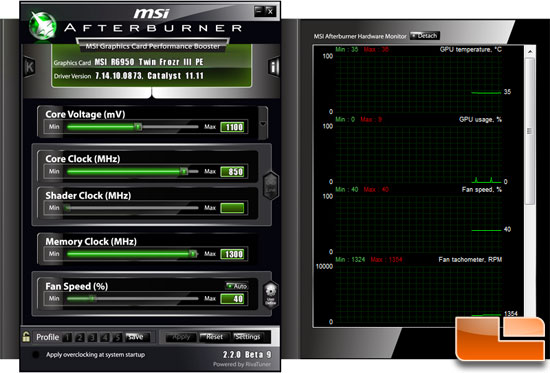
MSI recently released Afterburner 2.2 beta 9 and we tried it out on the MSI R6950 Twin Frozr III 1G/OC video card to overclock it. The MSI Afterburner software that is made available to consumers it very easy to use and is a robust utility to overclock video cards.
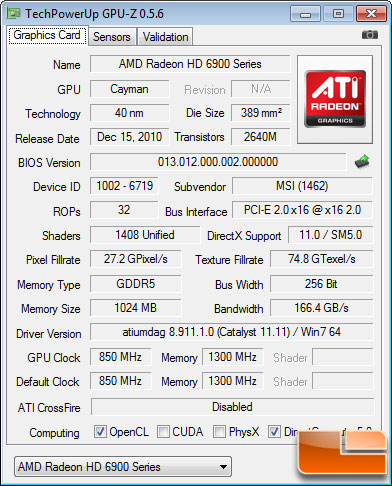
The AMD Radeon HD 6950 reference card comes clocked at 800MHz on the core and 1250MHz on the GDDR5 memory. MSI bumped both the GPU core and memory clock up by 50MHz to give this card overclocked performance right out of the box.

By running the core clock at 850MHz and the memory clock at 1300MHz doesn’t leave much room for overclocking as the highest you can go in CCC is 900MHz core and 1325MHz memory. You can get around this limit if you are comfortable making some changes in the Afterburner files that will increase overclocking headroom to up to 1530MHz on the core. The steps needed to unlock higher overclocking options are as follows:
To enable the unofficial overclocking in this version it is necessary to edit the MSIAfterburner.cfg file located in the installation directory of AfterBurner (typically Program Files (x86) MSI Afterburner).
You need to alter the following:
- Seek UnofficialOverclockingEULA field and add following text:
I confirm that I am aware of unofficial overclocking limitations and fully understand that MSI will not provide me any support on it - Set UnofficialOverclockingMode to 1 to keep PowerPlay active (may not work on old ASICs), 2 to traditionally disable PowerPlay or to 0 to temporary disable unofficial overclocking path
Once this is done you’ll be able to futher overclock the video card.
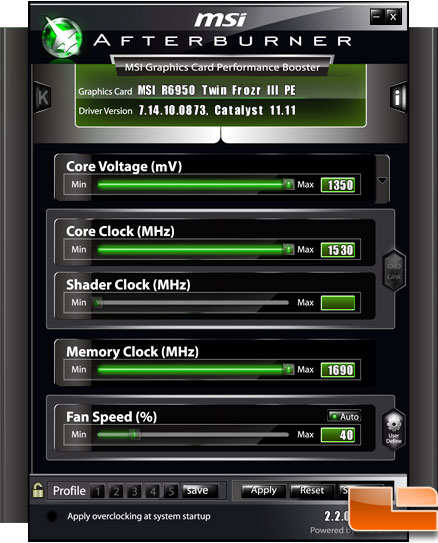
As you can see in the image above the max frequencies on the MSI Radeon HD 6950 used to be 900MHz on the core and 1325MHz memory, but are now 1530MHz on the core and 1690MHz on the memory. We know from experience that we won’t come close to those numbers, so that is plenty of overclocking headroom for this application.
We talked to MSI to see what a decent overclock is for the MSI R6950 would be and they said that the lowest overclock they have seen is 872MHz and that the highest that they’ve seen is 960-970MHz on the core. They went on to say that the average overclock is around 900-925MHz on the core and 1400MHz on the memory.
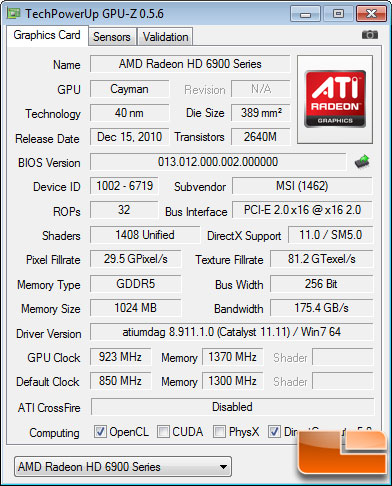
The highest overclock that we could get without any voltage increase was 920MHz on the core and 1370Mhz on the memory. We bumped up the voltage by +100mV and we were able to get 923MHz rock solid on the core. Throwing more voltage at the core doesn’t do too much for overclocking from the looks of things as we tried +150mV and even +200mV and we couldn’t get any higher on the core clock.
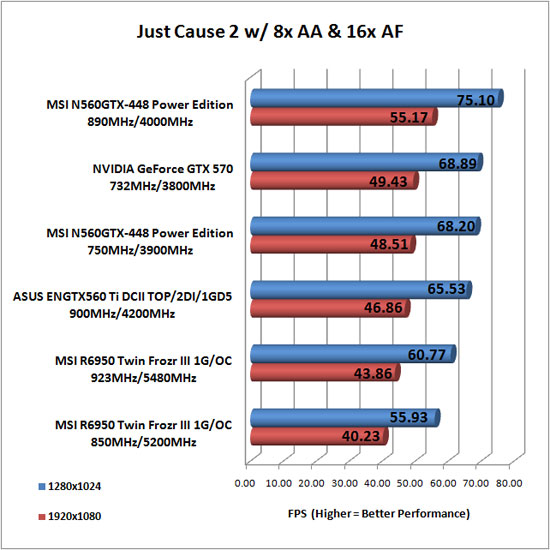
This overclock was enough to get the MSI R6950 Twin Frozr III 1G/OC to perform better than the out of the box settings as we were able to get 5 FPS better performance at a resolution of 1280×1080 in the game title Just Cause 2. Let’s take a look at the performance improvement on 3DMark 11 next.
MSI R6950 Twin Frozr III 1G/OC at 850MHz core and 1300MHz memory:

MSI R6950 Twin Frozr III 1G/OC at 923MHz core and 1370MHz memory:
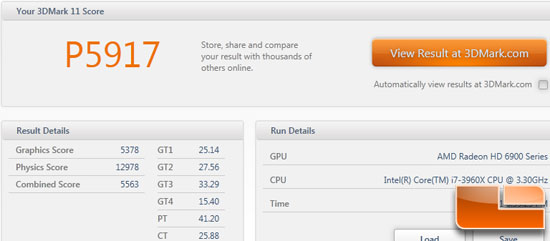
We tried out this overclock with Futuremark 3DMark 11 on the performance preset and saw the score go from P5513 to P5917, which is a 7.3% or 404 3DMark point increase from the cards stock settings. Our 73 MHz core clock speed increase was a 8.6% increase, so we are happy to see a solid 7% performance increase in this synthetic benchmark.

Comments are closed.